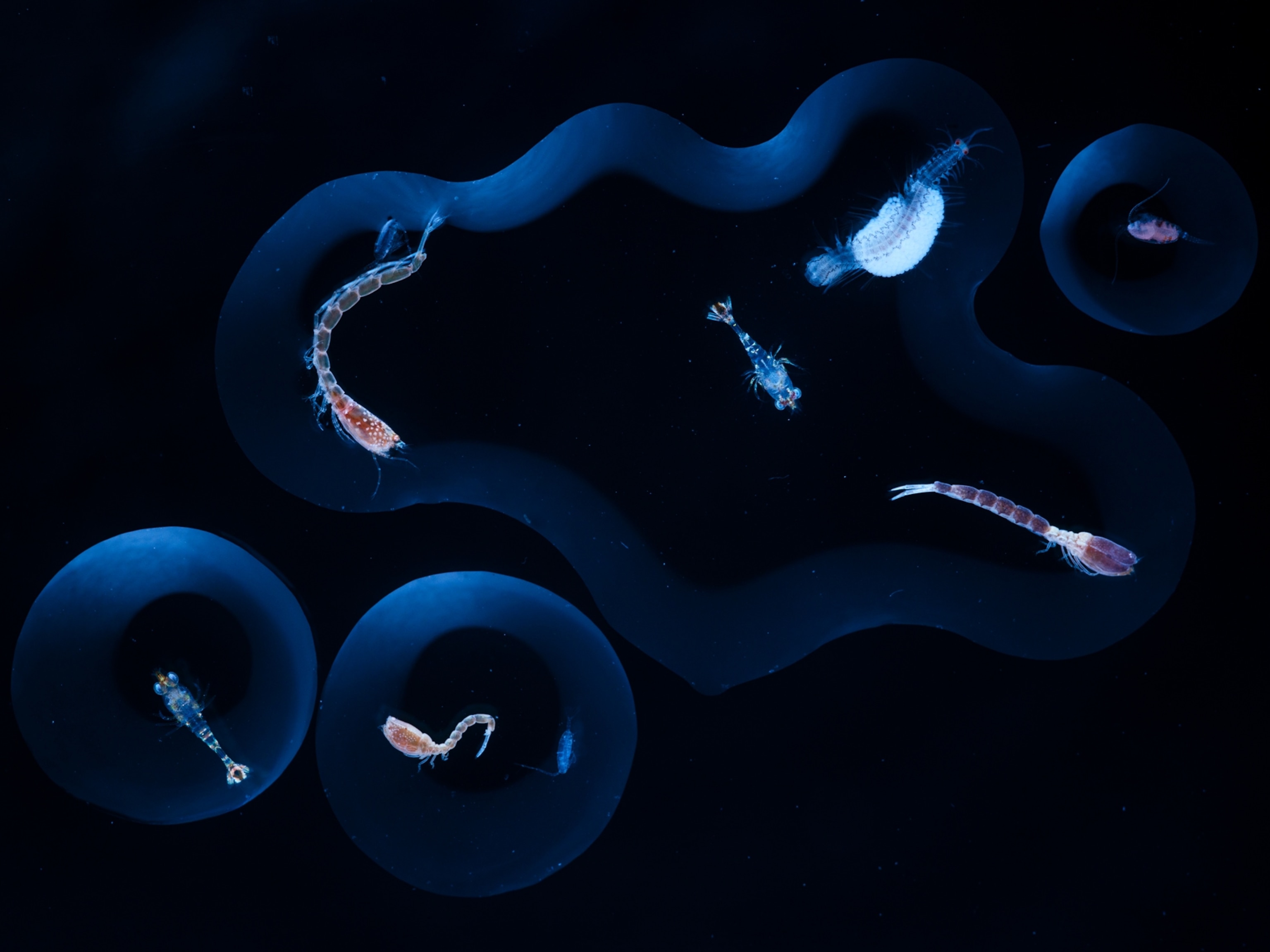
Male Crabs Claw Their Way to Successful Seductions
A supersize claw gives a sand fiddler crab advantages in waving down prospective mates, and beating the heat on the beach.
All around her, guys wave seductively, beckoning her to their beach homes. How will the female fiddler crab pick a mate? By the quality of his lodging, the allure of his wave—and, especially, the size of his claw.
The female fiddler crab has two small, symmetrical claws; the male has one small and one oversize. “The large claw is all about the initial attraction,” says marine biologist Zachary Darnell of Louisiana’s Nicholls State University. After checking out several males and the love-nest burrows they’ve dug, a female “will find a male whose claw she really likes,” he says. “Maybe a crab with a large claw relative to his body size, and a bit higher wave than others”—because if he can tote and swing a claw that’s up to half his body weight, he’s probably a physically fit sire.
After the pair has sex in the beach burrow, the female stays there while her eggs develop; the male goes back to waving, and often brings home other females. On the hot sand, his claw is more than just a chick magnet, Darnell’s research has found. It’s a thermoregulator, as air passing over it seems to dissipate heat and lower body temperature.
A big claw is also the male crab’s best weapon: He uses it to fight rivals and keep intruders away from his burrow. After a few weeks, the pregnant females will emerge from that love lair and head for the waterline, where they’ll release the larvae.
Related Topics
You May Also Like
Go Further
Animals
- This ‘saber-toothed’ salmon wasn’t quite what we thoughtThis ‘saber-toothed’ salmon wasn’t quite what we thought
- Why this rhino-zebra friendship makes perfect senseWhy this rhino-zebra friendship makes perfect sense
- When did bioluminescence evolve? It’s older than we thought.When did bioluminescence evolve? It’s older than we thought.
- Soy, skim … spider. Are any of these technically milk?Soy, skim … spider. Are any of these technically milk?
- This pristine piece of the Amazon shows nature’s resilienceThis pristine piece of the Amazon shows nature’s resilience
Environment
- This pristine piece of the Amazon shows nature’s resilienceThis pristine piece of the Amazon shows nature’s resilience
- Listen to 30 years of climate change transformed into haunting musicListen to 30 years of climate change transformed into haunting music
- This ancient society tried to stop El Niño—with child sacrificeThis ancient society tried to stop El Niño—with child sacrifice
- U.S. plans to clean its drinking water. What does that mean?U.S. plans to clean its drinking water. What does that mean?
History & Culture
- Meet the original members of the tortured poets departmentMeet the original members of the tortured poets department
- Séances at the White House? Why these first ladies turned to the occultSéances at the White House? Why these first ladies turned to the occult
- Gambling is everywhere now. When is that a problem?Gambling is everywhere now. When is that a problem?
- Beauty is pain—at least it was in 17th-century SpainBeauty is pain—at least it was in 17th-century Spain
- The real spies who inspired ‘The Ministry of Ungentlemanly Warfare’The real spies who inspired ‘The Ministry of Ungentlemanly Warfare’
Science
- Here's how astronomers found one of the rarest phenomenons in spaceHere's how astronomers found one of the rarest phenomenons in space
- Not an extrovert or introvert? There’s a word for that.Not an extrovert or introvert? There’s a word for that.
- NASA has a plan to clean up space junk—but is going green enough?NASA has a plan to clean up space junk—but is going green enough?
- Soy, skim … spider. Are any of these technically milk?Soy, skim … spider. Are any of these technically milk?
- Can aspirin help protect against colorectal cancers?Can aspirin help protect against colorectal cancers?
Travel
- What it's like to hike the Camino del Mayab in MexicoWhat it's like to hike the Camino del Mayab in Mexico
- Is this small English town Yorkshire's culinary capital?Is this small English town Yorkshire's culinary capital?
- This chef is taking Indian cuisine in a bold new directionThis chef is taking Indian cuisine in a bold new direction
- Follow in the footsteps of Robin Hood in Sherwood ForestFollow in the footsteps of Robin Hood in Sherwood Forest




